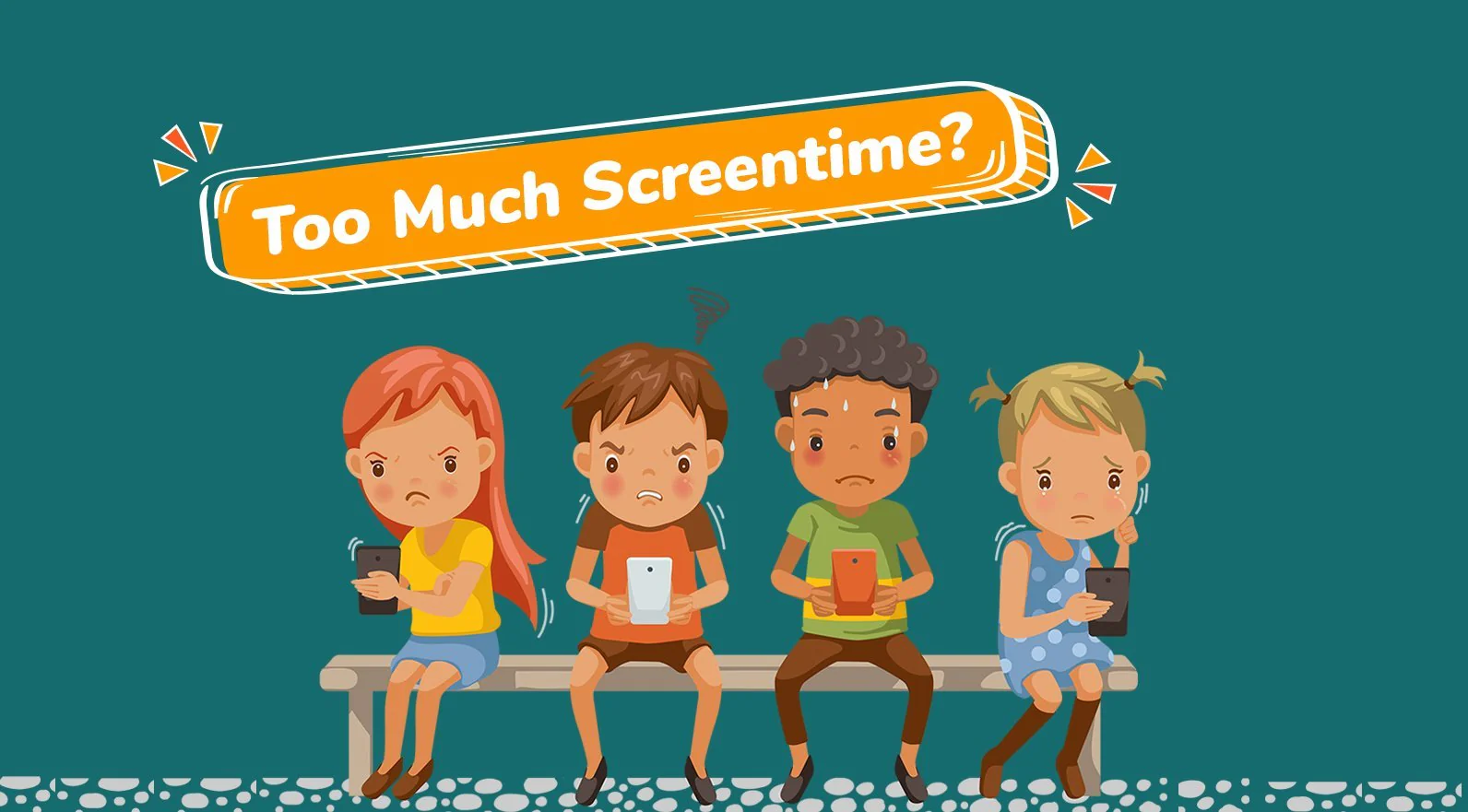From Cocomelon to BGMI (formerly PubG) and from Snapchat to endless YouTube Shorts, managing screen time for kids has become the biggest headache for parents today.
The importance of managing screentime for kids now is greater than ever. Remember how we rushed to playgrounds to play with our friends? Cricket, Football, Kabaddi, Kho-kho, and badminton are just a few of the favorite games of our generation. But the world changed so soon. The cricket game we used to play on the grounds found its place on playstation. The ludo we used to play with our friends and family members together are now played digitally, with each player on their bed, under the blanket, tapping their phone screens. Today, we can hardly find kids attracted to outdoor games.
Well, the digital transformation is real, and it happened too quickly. We live in a hyper-connected world, and screens are everywhere. The worse, even our new born kids are exposed to the same. From smartphones and laptops to television and tablets, digital devices have permeated almost every aspect of our lives.
Of course, they provide a lot of benefits, including more interactive learning, better knowledge retention, and better engagement. However, excessive screen time can be significantly dangerous, especially to children necessitating effective management of screentime for kids. Therefore, we need to establish healthy boundaries and promote balance to make maximum use of the digital revolution without impacting the health and mental peace of our kids, and our families as well.
The allure of screens is undeniable. They provide a constant stream of stimulation. but their constant exposure can not only harm physical health by causing eye strain, headaches, and sleep disturbances but can also affect mental health by triggering anxiety, depression, and social isolation.
One way to address this problem is to effectively manage screentime for kids. the first step is – we must acknowledge the problem. we need to admit our kids spend a lot of time watching mobile and TVs and we, as a parents, are to blame. everytime we where busy doing our work, we handed them mobiles to keep them distracted and not disturb us. so, this is the time that we must do our bit to make them more involved in life rather than screens.
Thankfully, digital devices today come with built-in screen time features, and there are dedicated apps to manage screentime. Apart from that, there are a few more things that you must integrate into your lives, as explained further.
Establishing Boundaries to Manage Screen Time
- Designate Screen-Free Zones and Times: Create specific areas in your home, such as the bedroom or dining table, where screens are prohibited. Similarly, establish screen-free periods, such as during meals or before bedtime. A “digital sunset” a few hours before sleep can significantly improve sleep quality.
- Set Time Limits: Use timers or app limits to restrict screentime for kids to specific durations. Break down screen time into smaller, manageable chunks throughout the day.
- Prioritize Real-Life Interactions: Engage in face-to-face interactions with family and friends. Schedule activities that encourage social interaction, such as board games, outdoor activities, or shared hobbies.
- Mindful Consumption: Be intentional about your screen use. Ask yourself, “Why am I using this device?” and “Is this truly beneficial?” Avoid mindless scrolling and aim for purposeful engagement.
- Replace Screen Time with Alternative Activities: Discover hobbies and interests that don’t involve screens. Reading, exercising, playing music, or engaging in creative pursuits can provide fulfilling alternatives.
- Lead by Example: If you are a parent or guardian, model healthy screen habits for children. Children learn by observing, and your actions will significantly influence their behavior.
Have you noticed how earlier, during weddings, family gatherings, or functions, we all kids used to play all day long, running and laughing, but today, kids can be found cornered in a group watching mobiles? Is this the case in your child’s birthday party also?
Then explore the best birthday party games for your kids that will keep their friends engaged and make the party memorable.
Promoting Balance and Encouraging Healthy Screentime for Kids
Balance is not about eliminating or completely removing screentime for kids entirely; it’s about integrating them into our lives healthily and sustainably. Consider the following:
- Active vs. Passive Screen Time: Differentiate between active screen time, such as learning a new skill or creating content, and passive screen time, such as binge-watching television. Prioritize activities that engage your mind and foster creativity.
- Digital Detox: Consider scheduling regular digital detoxes, even if it’s just for a few hours or a day. This allows you to disconnect from the digital world and reconnect with yourself and your surroundings.
- Mindfulness and Meditation: Practice mindfulness and meditation techniques to cultivate awareness and reduce stress. These practices can help you become more present and less reactive to digital distractions.
Managing screen time is an ongoing process that requires conscious effort and commitment.
We as parent must set boundaries, promote balance, and prioritize well-being so that we can properly utilize the benefits of technology without succumbing to its potential drawbacks.
Ultimately, a healthy relationship with screens is essential for a fulfilling and balanced life in the digital age. Sources and related content



